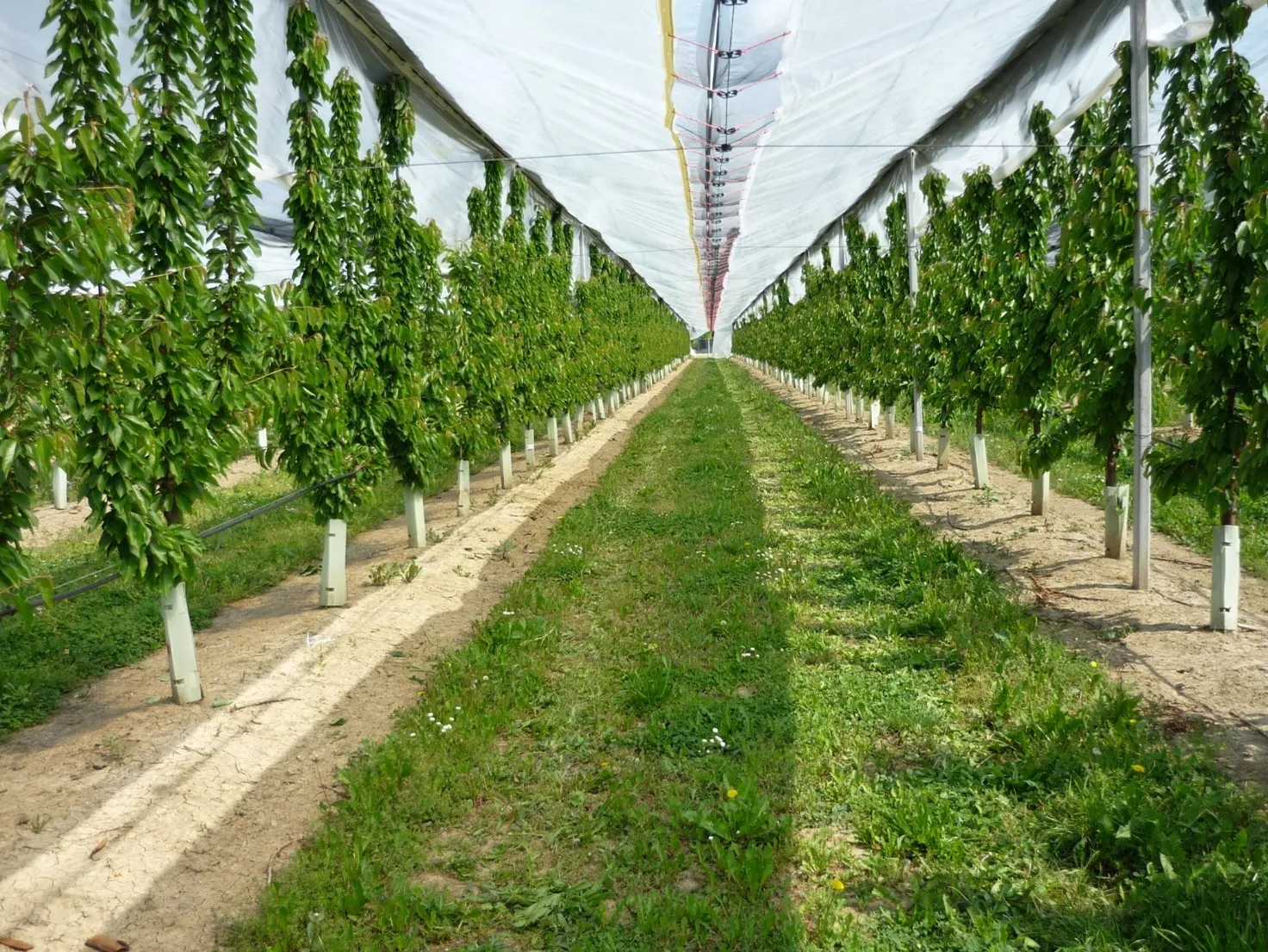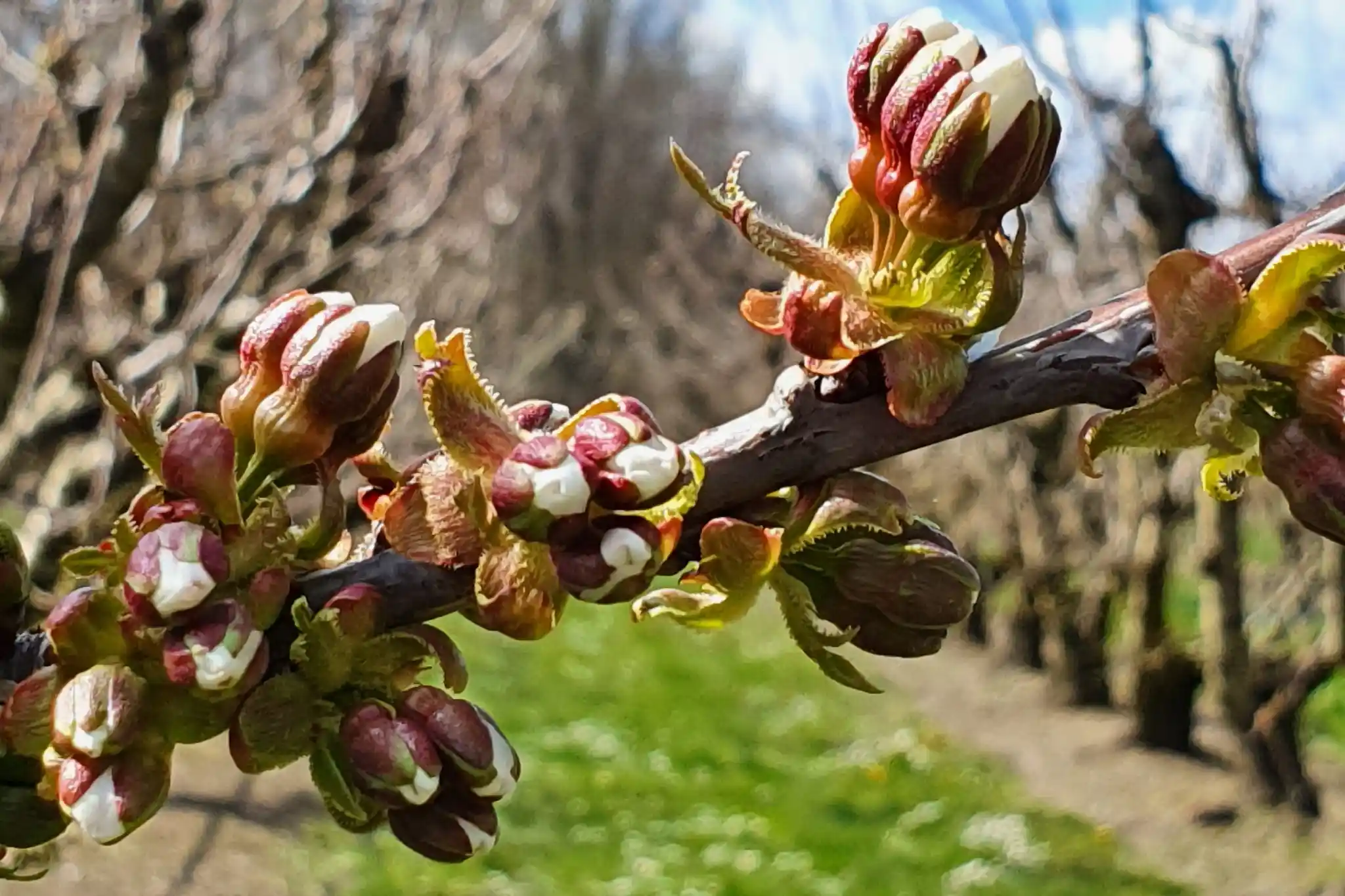The Valle del Jerte Cooperative Association is a second-level cooperative made up of 16 base cooperatives representing more than 3,500 farmers from the Valle del Jerte and La Vera regions, in the northern province of Cáceres, Extremadura.
Founded in the late 1980s, the organization has established itself as one of Europe’s leading cherry and picota (stemless cherry) traders, with an annual production of over 20,000 tonnes of fruit, including chestnuts, figs, plums, and berries.
The Association oversees the entire production process, from harvesting to distribution, ensuring product quality and traceability.
It also has modern facilities for sorting, packaging, and storage, and has developed gourmet product lines such as liqueurs and jams.
A mid-to-late season campaign, but with a stable outlook
"We’re halfway through the season. If conditions allow, we’ll sell about 16 million kilos."
This is how José Antonio Tierno summarized the current situation. The 2025 campaign started three weeks late in the Jerte Valley and, as of May 22, around 80,000 kilos were arriving daily, with a progressive increase of 10,000 to 15,000 kilos per day.
Although this delay could cause some overlap between varieties, the president believes that this year they will avoid the production gap seen in 2024 between extra-early (such as Burlat and Early Lory) and early varieties (such as Samba and Sandra Rose).
"Even though we started later, production will speed up. Starting June 15, we’ll reach our usual peak in annual output."
Setting differences based on rootstock
From the beginning of the campaign, differences in fruit set are observed between areas, not only due to variety but also because of the rootstock used.
According to the Association’s president, this is a technical factor being closely monitored this year:
"Rootstock has a significant impact. We’re seeing higher yields, for the same variety, on Colt and Adara compared to Avium rootstock."
This differential behavior in fruit setting highlights the importance of considering rootstock as a key agronomic factor when planning varieties and adapting to each area of the valley.
🏭 Processing: high capacity, limited staff
The Group’s infrastructure is well equipped: five sorting machines and 48 packaging lines, 32 of which are dedicated to small formats.
"With small formats, we can process and pack around 250,000 kilos a day. Across all formats, total capacity reaches 350,000 kilos—a figure suited to the volume we handle this season. Our limiting factor is having enough workers."
That bottleneck—labor—is a constant:
"It’s becoming increasingly difficult to attract labor. We offer short, intense jobs and we are in a sparsely populated area."
Labor: towards a source-based model
Workforce availability remains one of the main obstacles to the campaign’s success. Faced with a labor market offering more stable alternatives and a rural area with low population density, the Association has chosen a clear strategy:
"Our strategy is to recruit locally. We did it last year and again this year. We hope to strengthen this strategy."
The goal is to coordinate campaigns across different production areas to ensure greater continuity for workers, improve stability, and ensure a sufficient labor flow during critical harvesting and packing periods.
"In the end, it’s also about attracting foreign labor."
Exporting to China: a strategic opportunity, but step by step
The Association has participated from the beginning in drafting the national protocol for exporting cherries to China, as part of the Cherry Roundtable. This development is viewed from two complementary perspectives.
On one hand, Spain has already established itself as the leading cherry producer in the European Union, surpassing France and Italy. Growth has been particularly strong in areas like Aragon, while in Extremadura, surfaces have remained stable despite varietal shifts.
In this context, exporting to new markets is seen as essential:
"If part of this production growth is directed to China, it will help us ease congestion in the European market, which remains our main focus."
On the other hand, the Group is directly interested in exploring this new market—albeit cautiously:
"We’ll need certification, but we want to try. Selling in China is not like selling in Europe. There have already been major failures due to a lack of understanding."
Differences in labeling, formats, marketing, and consumer habits require a tailored strategy. In addition, there are logistical challenges:
"By ship, it would take 30 to 35 days. By air, it’s only feasible with direct flights. Layovers can break the cold chain."
Furthermore, although the protocol has been approved, the required audits for certifying farms and facilities have not yet been conducted, meaning no company can export at this time:
"Many opportunists are claiming they’ll export this year without even knowing what’s required. You need to register, have your fields and packing rooms approved... The procedure must be validated by the Ministry. This means, for now, no one can start exporting."
It is expected that audits will be carried out by the end of May, with the first permits possibly available by late June or early July.
"Yes, we’ve been contacted by a serious importer. There is an opportunity to explore further."
A Designation of Origin in transformation
The Jerte Cherry Designation of Origin is celebrating its 30th anniversary and, according to José Antonio Tierno, must adapt to the current context:
"Everything is changing—production systems, formats, marketing. The PDO can’t remain static. We need to provide the region with competitive tools."
To this end, the Regulatory Council has promoted a reform of the specifications to include three varieties cultivated in the valley for decades: Burlat, Van, and Lapins.
This was done, Tierno notes, not just because of their historical presence, but also due to the Jerte production system:
"These varieties have been grown here for over 30 years, but that’s not all. They are cultivated under Jerte’s unique conditions: terraced plots, small family farms, a distinctive climate and production method compared to other areas. All of this gives them distinctive characteristics that justify their inclusion in the Jerte Cherry PDO."
The amendment process has already been approved in Spain and now awaits publication in the Official Journal of the European Union. Tierno confirms:
"This year we’ll be able to certify Van and Lapin. Burlat will have to wait due to scheduling issues."
Adaptation, innovation, and future outlook
The interview with José Antonio Tierno reveals a realistic, well-grounded, and strategic vision. A campaign marked by weather and labor uncertainty, but also by strong adaptability: modernizing the PDO, opening to the Chinese market, and strengthening the sourcing model.
Source: elmundodelacereza.com
Image source: El Periodico Extremadura
Jesus Alonso Sanchez
El Mundo Cereza
Cherry Times – All rights reserved












